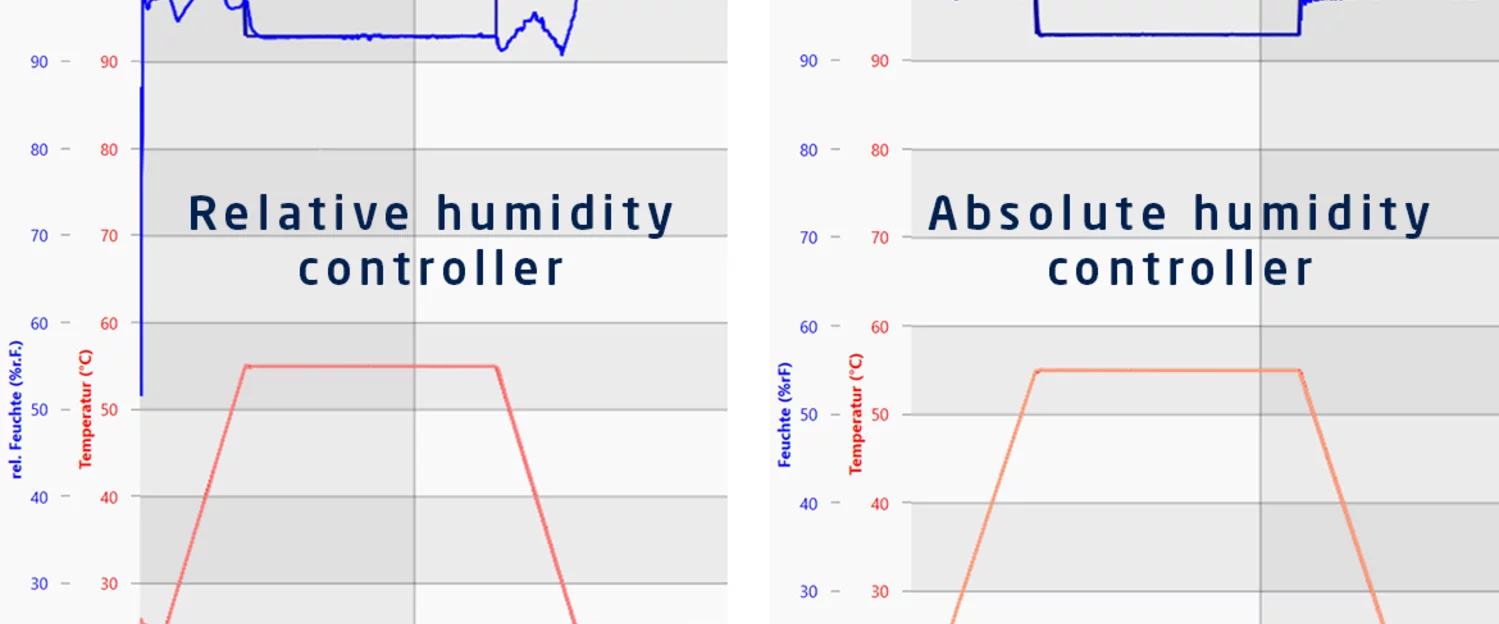Testing of changing climates is important for product development and quality assurance in the automotive and electronics industries. Their results are relevant for the approval of products and the optimisation of product reliability. Therefore, the test results must be as accurate and reproducible as possible. With the absolute humidity control, weisstechnik has significantly improved the control accuracy of the new ClimeEvent test chambers.
Climate change tests according to DIN EN 60068-2-30/38
Electronic components are tested as early as the development phase in order to ensure their functionality, even under conditions of high humidity. Cyclically alternating climate tests, in accordance with DIN EN 60068-2-30 with humidity and heat and in accordance with DIN EN 60068-2-38 with high humidity, are among the most frequently performed tests. The tests are used to examine the suitability and resistance of the products for operation, transport and storage in high humidity and fluctuating temperatures. The standards specify the required test sequence for this with narrow temperature and humidity tolerances.
The challenge of two-dimensional control
Only temperature values and the specified cooling and heating rates have to be fulfilled for simple temperature change tests. Control becomes considerably more complex with combined temperature and humidity change tests as temperature and humidity influence each other. As the temperature rises, the relative humidity decreases because warmer air can absorb more moisture. On the other hand, if the temperature drops, the relative humidity rises. These effects must be taken into account when controlling the humidity; the test chamber must humidify and dehumidify depending on the temperature. Since only minor deviations are permitted, it is also important to be able to reproduce the required climatic cycles as accurately as possible at all times.
Critical transient behaviour in the test cycle
Tests at high climatic values such as 60/90, 80/90 or 85/85 °C/% r.h. are not only challenging for test specimens, but also for the test systems. This is because precise control is required to ensure the tight tolerances, especially in the humidity range with changing temperatures and the resulting changing dew point. Climate test chambers usually work with relative humidity. The test chamber humidifies and dehumidifies iteratively depending on the temperature change. This leads to alternating overshoot and undershoot and subsequently settling to the setpoint. To minimise this effect, it was necessary to develop a new solution.
Absolute humidity control reduces the complexity of the control system
The absolute humidity, or the water content present in the test space, is not affected by temperature changes. Based on this, it is possible to reduce the complexity of the control system from two-dimensional to one-dimensional and to significantly increase the precision of the control. The new ClimeEvent test chambers from weisstechnik are the only ones on the market to follow this concept, for which a patent application has been filed. Where test chambers controlled via the relative humidity value tend to react paradoxically and have to readjust iteratively due to the changing dew point, the new ClimeEvent test chambers directly control the humidity towards the required water content. Thanks to the standard integrated absolute humidity control, the control-critical ranges are achieved with confidence in the event of temperature changes and the setpoints are reached much faster and with significantly fewer overshoots or undershoots. This significantly improves the control accuracy and reproducibility of alternating tests according to DIN EN 60068-2-30 and -38. Incidentally, this also applies to high load density in the test space.
3,907 characters (including spaces). Reprint free of charge. Please state Weiss Technik GmbH as a source.

